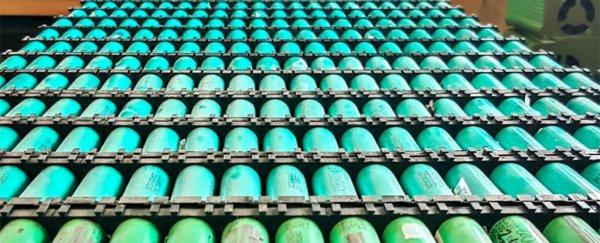Tesla's Powerwall was intended to provide a convenient way for homeowners to store electricity for future use, such as when the power goes out. But with a US$5,500 price tag, they haven't been affordable for many consumers.
Some who had been interested in the tech, however, decided to try to make their own. It turns out homemade powerwalls aren't just more affordable, but often are capable of storing just as much power as the Tesla version.
Consumers have constructed their own powerwalls by utilising old, recycled batteries from laptops. While they may seem useless or devoid of battery life at first glance, DIYers have capitalised on their own resourcefulness and the wastefulness of those around them.
There are forums and numerous YouTube videos dedicated to helping people build their own powerwalls; one YouTuber, Joe Williams, explains that it all comes down to being able to trust something you built yourself — as opposed to what a company says is right for you.
"The end result is being able to rely on something I not only built myself but understand the ins and outs of to power some or all of my electricity in my home. That is inspiring," said Williams to Motherboard.
Tesla's Powerwall is capable of storing up to 14 kWh, but that's not due to the limits in technology, since others have been able to store much more. On the DIYPowerwalls forums, one user named Glubux claims his custom made powerwall can hold up to 28 kWh.
Australian YouTube creator Peter Matthews built one that he claims can store 40 kWh, which it gathers from the 40 solar panels on his roof.
18650 lithium-ion batteries are the most recommended batteries to use, and they're easily identifiable by their colourful plastic. They can be found in more than just laptops, but collecting enough of them to create a powerwall can be time consuming.
Foraging may be a more economical option, however, since store prices for batteries can be more than US$5 per battery.
Having less impact on one's finances isn't the only benefit to building your own powerwall. Since people often throw away their laptops without removing the batteries, they usually end up in a landfill. But DIY powerwall builders are recycling batteries and giving them a whole new purpose.
"Approximately 95 percent of consumer batteries sold in the US are not recycled and are ultimately thrown away," said Call2Recycle CEO Carl E. Smith to Motherboard.
This trend is proof that people will create their own worthwhile hardware is companies aren't providing what they want at prices they can afford.
While there are some risks to building a powerwall if you don't have the proper tools and resources, a little research, invested time, and a little ingenuity can go a long way.
Update: ScienceAlert advises that messing with old batteries can be dangerous, and we do not recommend anyone attempting to create their own powerwalls without first looking at the risks involved.
This article was originally published by Futurism. Read the original article.
